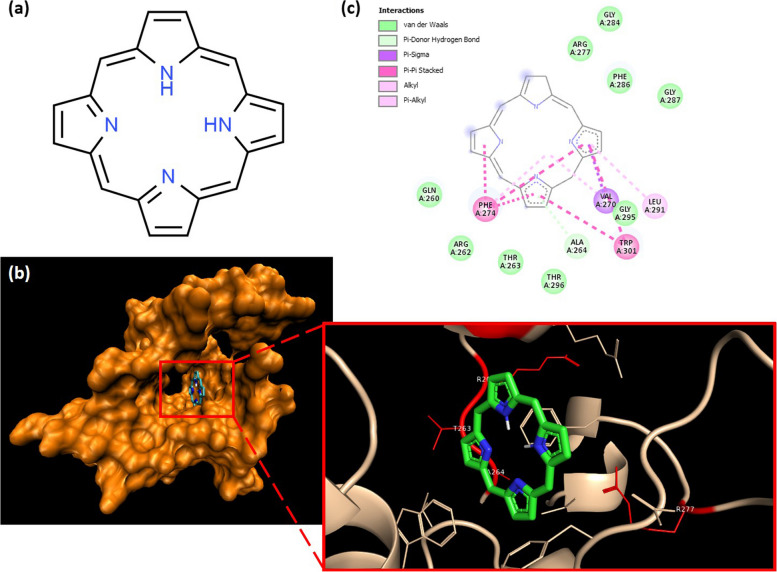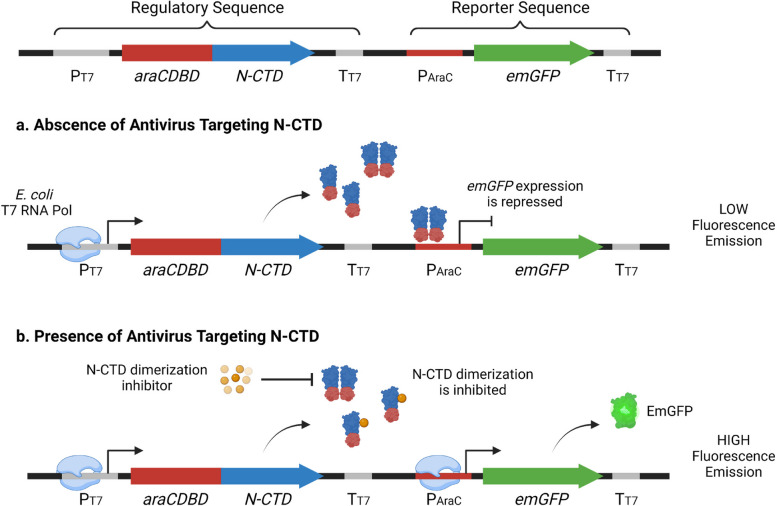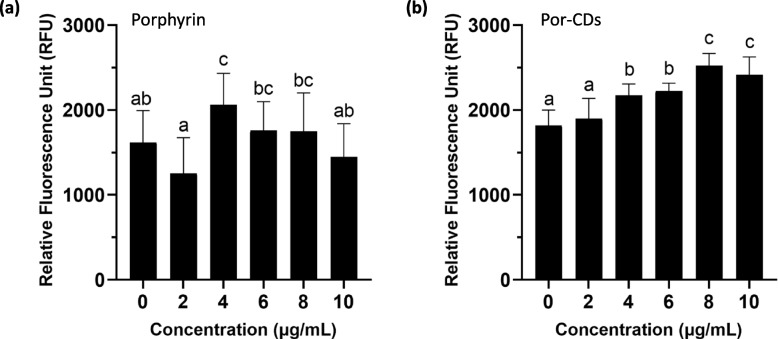卟啉衍生的碳点用于增强针对严重急性呼吸系统综合征冠状病毒2型核衣壳CTD的抗病毒活性。
IF 2.8
Q3 Biochemistry, Genetics and Molecular Biology
Journal of Genetic Engineering and Biotechnology
Pub Date : 2023-12-01
DOI:10.1186/s43141-023-00548-z
引用次数: 0
摘要
背景:由于治疗新冠肺炎的有效抗病毒药物数量仍然有限,因此对具有抗SARS-CoV-2抗病毒活性的化合物的探索需求很大。卟啉有可能被开发为新冠肺炎抗病毒药物。然而,其在水中的低溶解度限制了其临床应用。将卟啉重建为碳点有望具有更好的溶解性和生物利用度以及更低的生物毒性。方法和结果:在本研究中,我们研究了卟啉和卟啉衍生的碳点对严重急性呼吸系统综合征冠状病毒2型的抗病毒活性。通过使用新型药物筛选平台,即基于二聚体的筛选系统进行的计算机分析和评估,我们证明了候选抗病毒药物抑制严重急性呼吸系统综合征冠状病毒2型核衣壳C端结构域二聚化的能力。结果表明,卟啉衍生的碳点对Vero E6细胞的细胞毒性低于卟啉。此外,我们还评估了它们对严重急性呼吸系统综合征冠状病毒2型感染的Vero E6细胞的抗病毒活性。卟啉转化为碳点大大增强了其在体外干扰严重急性呼吸系统综合征冠状病毒2型传播的性能。结论:因此,本研究全面展示了卟啉衍生碳点作为一种安全有效的新冠肺炎抗病毒药物的潜力。本文章由计算机程序翻译,如有差异,请以英文原文为准。



Porphyrin-derived carbon dots for an enhanced antiviral activity targeting the CTD of SARS-CoV-2 nucleocapsid
Background
Since effective antiviral drugs for COVID-19 are still limited in number, the exploration of compounds that have antiviral activity against SARS-CoV-2 is in high demand. Porphyrin is potentially developed as a COVID-19 antiviral drug. However, its low solubility in water restricts its clinical application. Reconstruction of porphyrin into carbon dots is expected to possess better solubility and bioavailability as well as lower biotoxicity.
Methods and results
In this study, we investigated the antiviral activity of porphyrin and porphyrin-derived carbon dots against SARS-CoV-2. Through the in silico analysis and assessment using a novel drug screening platform, namely dimer-based screening system, we demonstrated the capability of the antivirus candidates in inhibiting the dimerization of the C-terminal domain of SARS-CoV-2 Nucleocapsid. It was shown that porphyrin-derived carbon dots possessed lower cytotoxicity on Vero E6 cells than porphyrin. Furthermore, we also assessed their antiviral activity on the SARS-CoV-2-infected Vero E6 cells. The transformation of porphyrin into carbon dots substantially augmented its performance in disrupting SARS-CoV-2 propagation in vitro.
Conclusions
Therefore, this study comprehensively demonstrated the potential of porphyrin-derived carbon dots to be developed further as a promisingly safe and effective COVID-19 antiviral drug.
求助全文
通过发布文献求助,成功后即可免费获取论文全文。
去求助
来源期刊

Journal of Genetic Engineering and Biotechnology
Biochemistry, Genetics and Molecular Biology-Biotechnology
CiteScore
5.70
自引率
5.70%
发文量
159
审稿时长
16 weeks
期刊介绍:
Journal of genetic engineering and biotechnology is devoted to rapid publication of full-length research papers that leads to significant contribution in advancing knowledge in genetic engineering and biotechnology and provide novel perspectives in this research area. JGEB includes all major themes related to genetic engineering and recombinant DNA. The area of interest of JGEB includes but not restricted to: •Plant genetics •Animal genetics •Bacterial enzymes •Agricultural Biotechnology, •Biochemistry, •Biophysics, •Bioinformatics, •Environmental Biotechnology, •Industrial Biotechnology, •Microbial biotechnology, •Medical Biotechnology, •Bioenergy, Biosafety, •Biosecurity, •Bioethics, •GMOS, •Genomic, •Proteomic JGEB accepts
 求助内容:
求助内容: 应助结果提醒方式:
应助结果提醒方式:


